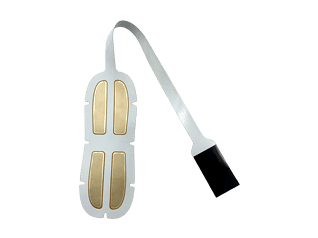What is High-Frequency PCB – An Overview of PCB Basics – Wellcircuits
What is High Frequency (HF) PCB?consequently RF PCB I also got a lot of attention and wanted to join the ranks. https://www.wellcircuits.com/
High Frequency PCB
In today¨s technological landscape, high-frequency electronic devices are becoming increasingly essential, particularly in wireless networks. The rapid growth of satellite communications and the shift toward high-speed, high-frequency information products demand the use of high-frequency substrates. Devices like satellite systems, mobile phone base stations, and other communication products require high-frequency PCBs for optimal performance.
Key Features of High Frequency PCBs
High Frequency PCB Features
The dielectric constant (DK) should be small and stable, with lower values minimizing signal delay.
The dissipation factor (DF) should also be low to ensure high-quality signal transmission, reducing signal loss.
Thermal expansion properties should be matched with the copper foil to prevent separation due to temperature variations.
Water absorption must be low, as higher absorption can negatively impact the dielectric constant (DK) and dissipation factor (DF) in humid environments.
The material must exhibit excellent heat resistance, chemical resistance, impact endurance, and peel strength.
Materials Used in High-Frequency Circuit Boards
Materials for High Frequency PCBs
High-frequency PCBs for wireless applications and high-speed data transmission, especially those in the GHz range, require specific material properties:
Adapted permittivity (dielectric constant).
Low attenuation to ensure efficient signal transmission.
Homogeneous construction with low tolerances in insulation thickness and dielectric constant.
Typically, high-frequency is defined as frequencies above 1 GHz. Currently, PTFE (polytetrafluoroethylene), commonly known as Teflon, is widely used for high-frequency PCBs, especially those operating above 5 GHz. FR4 and PPO substrates are commonly used for frequencies between 1 GHz and 10 GHz. The differences between these materials are as follows:
Regarding laminate cost, FR4 is the least expensive, while Teflon is the most costly. In terms of dielectric constant (DK), dissipation factor (DF), water absorption, and frequency characteristics, Teflon outperforms the other substrates. For applications requiring frequencies above 10 GHz, Teflon is the optimal choice, despite its higher cost and poorer heat resistance properties. To enhance the thermal and mechanical properties of PTFE, fillers like SiO2 or fiberglass are added. Additionally, because PTFE has molecular inertia and doesn¨t easily bond with copper foil, special surface treatments (such as chemical or plasma etching) are used to improve adhesion, though these may affect the dielectric performance.